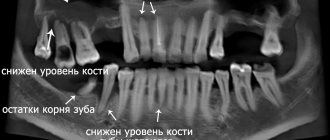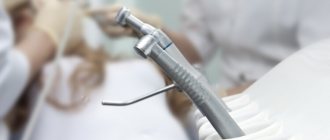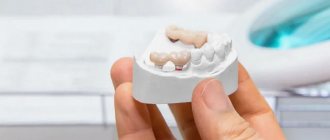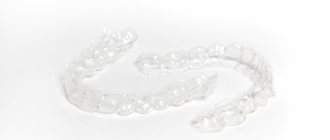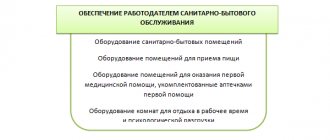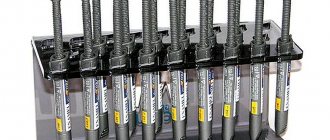What is a dental emergency?
Emergency dental care is understood as medical care provided for acute diseases, painful conditions, exacerbation of chronic diseases WITHOUT obvious signs of a threat to life, delaying the provision of which for an indefinite period of time will lead to a deterioration in the patient’s condition. Medical services can be provided in an outpatient setting.
Conditions requiring emergency dental care include:
- pulpitis (acute or exacerbation of chronic)
- periodontitis (acute and exacerbation of chronic)
- maxillofacial injuries (such as a dislocated or fractured tooth)
- exacerbation of odontogenic and non-odontogenic inflammatory diseases of the maxillofacial area
- stomatitis
- other acute painful conditions
- treatment requiring surgery
Emergency dental care can be provided both in a public dental clinic and in a private dental office.
Content
INTRODUCTION CHAPTER 1. ACUTE DISEASES OF THE CARDIOVASCULAR SYSTEM Angina pectoris Myocardial infarction Cardiogenic shock Cardiac asthma Pulmonary edema Disturbances of cardiac rhythm and conduction Extrasystole Paroxysmal tachycardia Atrial fibrillation Complete atrioventricular block Hypertensive crisis CHAPTER 2. BRONCHIAL ASTHMA CHAPTER 3. DRUG ALLERGY Lesions of the skin and mucous membranes Swelling Quincke Anaphylactic shock CHAPTER 4. COMATOUS CONDITIONS IN DIABETES MELLITUS Hyperglycemic coma Hypoglycemic coma CHAPTER 5. ACUTE NEUROLOGICAL CONDITIONS Fainting Transient cerebrovascular accidents Stroke Epileptic seizure CHAPTER 6. LOCAL ANESTHESIA IN DENTISTRY AND E E SIDE EFFECT CHAPTER 7. RESUSCITATION MEASURES IN THE EVENT OF SUDDEN DEATH
What is emergency dental care?
Emergency dental care refers to medical care provided for sudden acute diseases, conditions, exacerbation of chronic diseases that pose a threat to the patient’s life. Such assistance can ONLY be provided within a hospital setting. If, based on the results of the examination, the dentist made an objective decision that it is impossible to provide assistance on an outpatient basis, he has the right to refuse the patient and send him by ambulance to the hospital.
Conditions requiring emergency dental care include:
- cellulitis (an acute bacterial infection of the skin and subcutaneous tissues, most often caused by streptococci or staphylococci)
- abscess
- furuncle
- carbuncle
- osteomyelitis.
- tooth extraction requiring external access
- other conditions for which assistance can only be provided in a hospital setting
Emergency care in outpatient dental practice, comfortable and safe anesthesia
Part 1. Prevention of emergency conditions in outpatient dentistry
Legal basis for providing emergency care to patients in outpatient dentistry
- Modern laws and orders regulating the provision of assistance to a patient by a doctor of any specialty or a dentist in the event of an emergency condition in the patient
- Who and what determines the list of “emergency installation”
Prevention of emergency conditions
- Reasons for the development of emergency conditions
- How to understand that a patient is at risk
- Features of complaints of patients with harbingers of threatening conditions;
- Protocol for the dentist’s actions if the patient belongs to a risk group for the development of an emergency condition
- Patient with arterial hypertension planned/emergency, what to do
- Patient with allergies, planned/emergency, what to do
Premedication and postmedication in a doctor’s practice
- Types of premedication in the practice of a dentist: preparation of patients with a history of allergies, analgesic premedication, sedative premedication, antimicrobial premedication
- Post-medication: types, when necessary
Algorithm for the safe use of local anesthetics
- Risk groups for somatic pathology for local anesthesia
- Interaction of local anesthetics with other drugs
- Contraindications and restrictions for the use of adrenergic agonists as part of local anesthesia
How to make local anesthesia 100% effective
- Reasons for decreased effectiveness of local anesthesia
- Ways to make anesthesia effective
- Ways to make anesthesia comfortable
Practical part (role-playing workshop):
- Solving situational problems
- Analysis of specific situations (case studies) that arise in the practice of most doctors of all specializations (examples of real cases from the experience of participants in this seminar, group discussions, discussion of possible solutions)
Part 2. Diagnosis and differential diagnosis under time pressure. Mastering the skills of organizing the actions of an emergency assistance team. Mastering manual skills to provide assistance in emergency conditions.
Symptoms of emergency conditions
- Symptoms of early and late toxic reactions to local anesthesia:
- Symptoms of anaphylactic shock, acute coronary syndrome and other emergency conditions
- Differential diagnostic algorithm, or how not to get confused when the patient is unwell and understand what to do
- When exactly to call an ambulance?
- Using Algohelp system components for differential. diagnostics of urgent and threatening conditions
Practical part - role-playing workshop in small groups
Organizing the actions of the emergency care team
- Mastering the skills of working as part of an emergency care team: algorithm of actions of a doctor - head of an emergency care team;
- algorithms for the behavior of medical personnel during the development of various threatening conditions in a patient;
- Sudden death syndrome
- Fainting-collaptoid state
Manual skills and abilities required in the process of providing emergency assistance
Practical part - role-playing workshop on mannequins:
Mastering manual skills to provide assistance with:
- cardiac arrest
- anaphylactic shock
- partial or complete obstruction of the respiratory tract
- faint-collaptoid state
- early toxic reaction, etc.
Basic CPR
Restoring airway patency
- Safar's triple move
- Air duct installation
- Placement of laryngeal mask/combitube
- Conicotomy
- Hemlich maneuver (adults, pregnant women, children, and unconscious patients)
Techniques for assisting an unconscious patient
Routes of administration of medications for emergency conditions
Algorithms for providing assistance for the most dangerous diseases and conditions
- Algorithms for providing assistance for fainting-collaptoid state, anaphylactic shock, foreign body in the respiratory tract, hypertensive crisis, acute coronary syndrome, cardiac arrest
- Using Algohelp system components for effective treatment of emergency and threatening conditions
And today we’ll talk about acute conditions of patients, sometimes arising at the mere sight of a dentist. What kind of help should be given in this case? Vyacheslav TAKOEV, dentist-implantologist, chief physician of the Victoria LLC clinic, specialist in “dental phobias”, full member of the Russian Dental Associations, talks about this:
– Most often, during an outpatient dental appointment, patients develop collapse - acute vascular insufficiency, usually called syncope. It can occur in both vertical and horizontal positions. In most cases, it is iatrogenic in nature: a painful examination, pain from manipulations, including injections of local anesthetic, puncture of a vein, the sight of blood, etc. In those who are especially sensitive, collapse develops from one type of doctor and medical equipment. This kind of anxiety in the patient causes a decrease in heart rate, a decrease in vascular tone, which entails a redistribution of blood in the body due to a sharp expansion of the vascular bed and leads to bleeding of the brain.
Signs of approaching collapse are the patient's complaints of nausea, weakness, sometimes suffocation, and sudden thirst. The skin becomes pale, covered with perspiration, the pulse in the peripheral arteries is threadlike or absent, blood pressure when measured by the indirect method is sharply reduced or not determined. Loss of consciousness is accompanied by uncoordinated movements of the eyeballs, dilated pupils, and convulsions.
According to the stage of collapse, therapy should be gradual. The first thing to do is to place the patient in the so-called “Trendelenburg position,” in which the pelvis and lower limbs are located above the head. This will ensure blood flow to the brain. It is incorrect to bend the patient forward from a sitting position. Some dentists justify this action on the grounds that a confused patient lying on his back may “inhale” the contents of the oral cavity. However, bending leads to increased intra-abdominal pressure, which negatively affects blood circulation.
Next, to bring you out of a fainting state, carefully bring a piece of gauze moistened with an ammonia solution to your nose. In most cases, these measures are sufficient to stop the acute condition.
Exacerbation of hypertension. A rise in blood pressure above 140/90 millimeters of mercury by 40–50 millimeters in a person suffering from hypertension is called a hypertensive crisis.
A common occurrence at a dental appointment is arterial hypertension, which, by the way, should be distinguished from hypertensive crises.
To diagnose these conditions, it must be borne in mind that a hypertensive crisis (exacerbation of hypertension) is characterized by the presence of this disease in the anamnesis. Possible headaches in the occipital region, nausea, vomiting, numbness of the lips, forehead, facial flushing, flickering of spots before the eyes, and confusion.
The danger of hypertensive crises lies in the possible acute damage to target organs. Regional circulatory disorders are defined as acute hypertensive encephalopathy, stroke, acute coronary and acute heart failure. Therefore, such a patient must be urgently transferred to a called ambulance team, while waiting for it, the patient must be given antihypertensive drugs, for example, Corinfar, every 15 minutes under the tongue (up to 3 tablets), which gradually reduce blood pressure or prevent it from increasing.
Always be healthy!
LLC "Victoria" - st. Pashkovsky, 22.
Tel.: 25-37-62, 8-961-820-20-84.
(As an advertisement.)
First aid kit
Given dental emergencies, Dr. Peskin suggests filling your emergency kit with the following:
- epinephrine syringe;
- antihistamine syringe;
- a source of oxygen with excess pressure (oxygen cartridge for breathing);
- nitroglycerin in the form of sublingual tablets and spray;
- bronchodilator (asthma inhaler);
- products with a high sugar content (such as icing for confectionery);
- aspirin;
- Benadryl.
This list follows ADA guidelines. At the same time, Robert notes that the composition of such a set should reflect the skills of the specialists working in the clinic.
Emergency care for collapse
To successfully relieve the syndrome, the following algorithm was developed:
- Call an ambulance.
- Place the victim on a hard surface (table, asphalt road) and raise his legs using a cushion of clothing (this will increase blood flow to the heart and brain).
- Unbutton the collar of a tight-fitting shirt/blouse to facilitate breathing.
- Open the windows and door to ventilate the room.
- Since during collapse there is a decrease in body temperature, it is very important to warm the patient. If he is conscious, give him hot tea or coffee to drink; if not, wrap it in a warm blanket and put a heating pad on it.
- Wet a cotton swab with ammonia and bring it to the nose, rub the patient’s temples and earlobes.
- If possible, administer a solution of adrenaline and ephedrine.
NotaBene! In a collaptoid state, it is strictly prohibited:
- bring the patient to his senses by patting the cheeks;
- place a pill in the victim’s mouth or pour water into it if he is unconscious;
- giving heart medications - the popular nitroglycerin or validol, on the contrary, dilates blood vessels.

